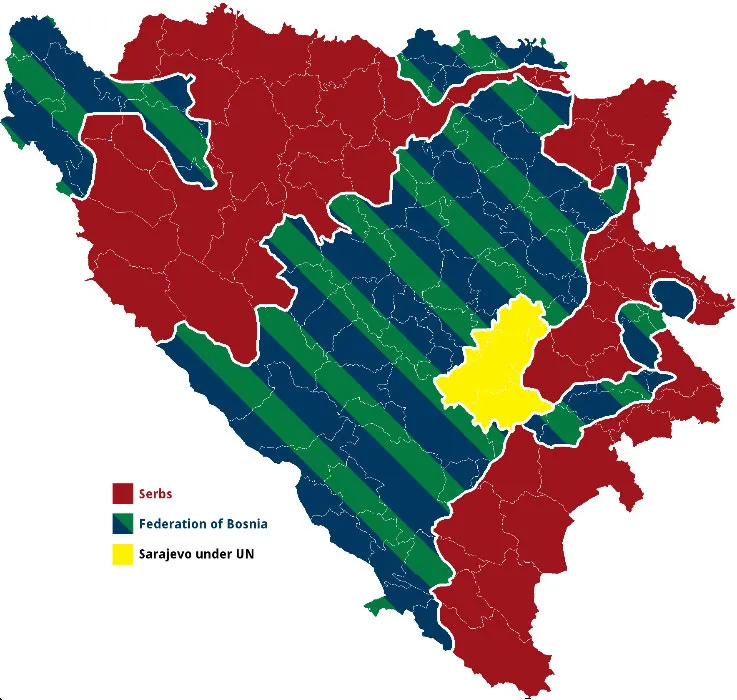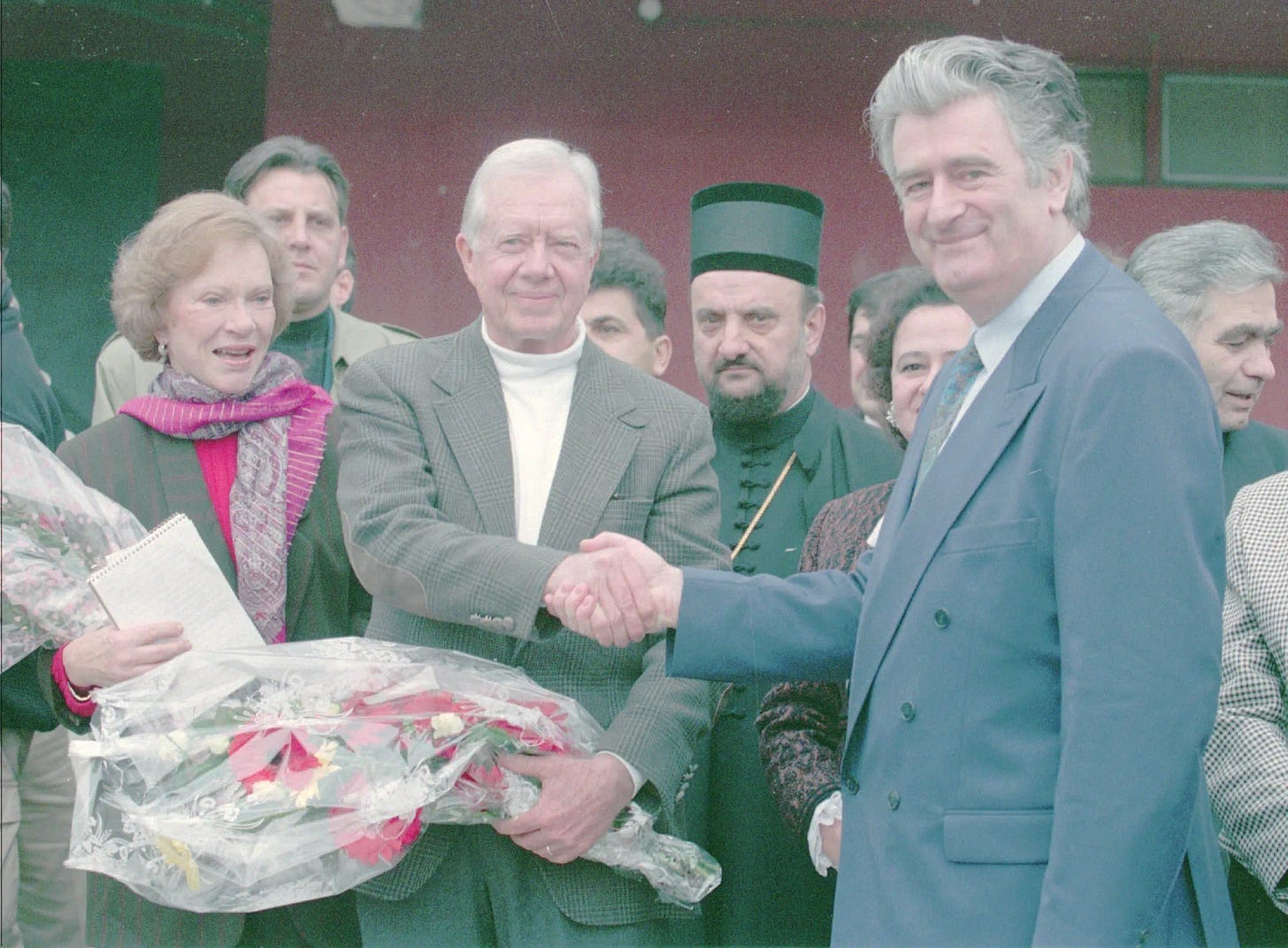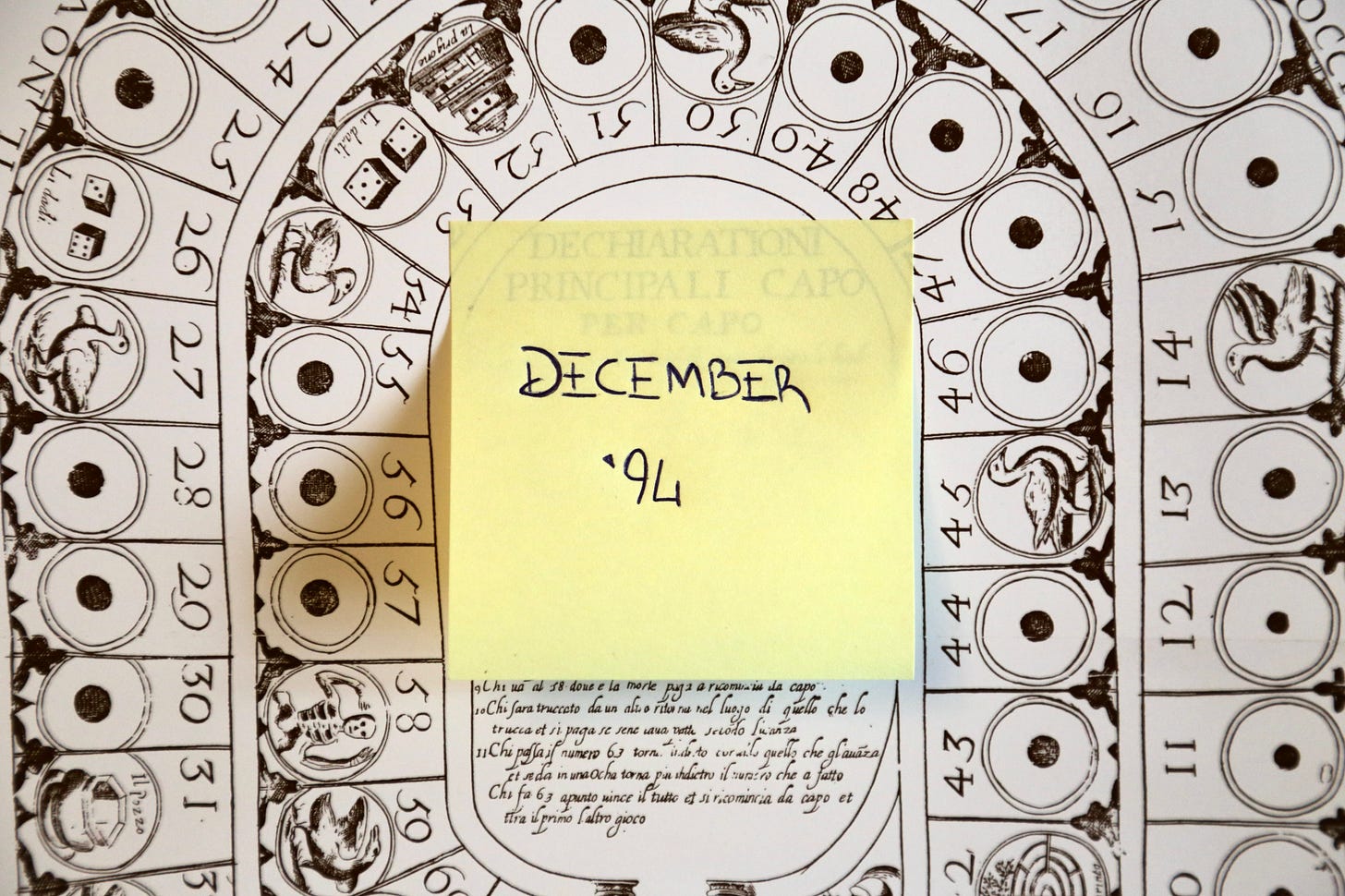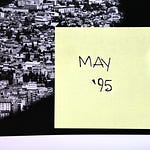December 1994.
The November counter-offensive by Bosnian Serb and Croatian Serb forces—supported by Belgrade—resulted in a significant defeat for the Bosniak camp [you can listen to the latest episode of The Yugoslav Wars here].
The 5th Army Corps, led by General Atif Dudaković, lost nearly all the territory it had gained in October.
After the fall of Velika Kladuša, the Bihać enclave came under siege, with air attacks launched from across the Croatian border, deep within the territory of the Republic of Serbian Krajina.
However, another event would mark history at the end of 1994. On 31 December, Sarajevo reached the tragic milestone of 1,000 days under siege—the longest in contemporary history.
‘The Yugoslav Wars’ podcast has been revamped! Starting today, it features an original theme song and bespoke music crafted by the talented Walter Fiorini, a professional sound engineer and long-time friend of BarBalkans. Tune in and listen here!
An equivocal truce
Taking note of the evolving situation on the battlefield, international diplomacy continues to seek a solution to resolve the conflict.
The starting point remains the Contact Group Plan. However, after the failed tug-of-war with Republika Srpska, U.S. Secretary of State Warren Christopher is forced to accept that he must resume contact with Pale.
It is primarily France and the United Kingdom that pressure the Contact Group to agree to allow the Bosnian Serbs to confederate with the Federal Republic of Yugoslavia in exchange for territorial concessions.
At the meeting on 2 December, the so-called ‘Brussels option’ is approved, envisaging “parallel relations” between both Sarajevo and Zagreb, as well as Pale and Belgrade.
The diplomatic solution sparks the ire of Bosnian President Alija Izetbegović, who denounces it as a “tacit division” of Bosnia and Herzegovina by the international community.
Izetbegović’s stance reflects the institutional voice of the frustration felt by the Bosniaks, who are increasingly turning to Islamic countries for armed support to counterbalance the British and French “protectors of the Serbs.”

It is at this point that the President of Republika Srpska, Radovan Karadžić, surprises everyone with his diplomatic twist, largely motivated by fear of the potential consequences of the Croat and Bosnian-Croat armies’ Operation Winter ‘94 in southeastern Bosnia.
Claiming the same right to self-determination as the Bosniaks and Bosnian Croats, Karadžić reiterates the demand for a confederation between Pale and Belgrade in an interview with CNN, and proposes former U.S. President Jimmy Carter as a mediator for peace.
Carter accepts, but his lack of knowledge of the region is immediately evident.
This leads Washington to respond harshly when Carter declares on 18 December in Pale that it is necessary to “let the world know the truth and explain the Serbs’ commitment to a peace agreement,” because “the Americans have so far only heard one side of the story.”
Despite the back-and-forth of declarations and denials, Carter manages to secure an agreement based on seven points on 20 December:
4-month ceasefire on all Bosnian territory as of 23 December;
Interposition of Blue Helmets on the front line;
Peace negotiations based on the Contact Group Plan;
Free passage of traffic at Sarajevo airport;
Free passage of humanitarian convoys to the Bosniak enclaves;
Release of prisoners of war;
Respect for human rights.
The official document is signed on 23 December. The Christmas truce is intended as a prelude to peace talks based on the ‘Brussels option.’
However, as soon as the ceasefire takes effect, it becomes clear that Carter has left behind a significant diplomatic ambiguity, which threatens to undermine the peace talks.
Bosniaks and Bosnian Serbs signed two different documents.
Izetbegović is convinced that negotiations will be based on the Contact Group’s peace proposal. Karadžić believes that the percentages of territory allocated to Republika Srpska and the Federation between Bosnian Croats and Bosniaks will also be negotiable.

Longer than Stalingrad
On 23 December, the ceasefire comes into force in Bosnia and Herzegovina. This includes Sarajevo, but the situation there is different.
On 31 December, Sarajevo reaches the tragic milestone of a thousand days under siege.
Started on 5 April 1992 and still ongoing, the siege of Sarajevo becomes the longest siege of a city in contemporary historye—longer even than the siege of Stalingrad during World War II, which lasted around 900 days.
On the 1,000th day of this tragedy, 72 internationally renowned politicians, intellectuals, and artists published a symbolic obituary in the International Herald Tribune:
“In memory of our dear Principles, Moral Values, and Commitments, who died in Bosnia in 1994.”
However—against the ‘Brussels option,’ the Franco-British push for an agreement with the Bosnian Serbs, Carter’s ambiguity, and the Bosniaks’ sense of betrayal—Us administration makes it clear that the game is not over.
State Department spokesperson Michael McCurry openly denounces a wave of ethnic cleansing in the territories controlled by the Bosnian Serbs, particularly in the Banja Luka area.
Ratko Mladić’s forces allegedly imprisoned, expelled, or killed 90% of the nearly two million non-Serb Bosnians who had lived in those territories before the war.
In response, the United States announces the allocation of $13 million to fund the International Criminal Tribunal for the former Yugoslavia, which was inaugurated in November 1993.
The support of readers who every day gives strength to this project - reading and sharing our articles - is essential to realize all that you have read and listened to, and even more.
If you know someone who can be interested in The Yugoslav Wars podcast, why not give them a gift subscription?
Every original product is the result of time, energy, and dedication, made possible with the support of readers.
Here is the archive of The Yugoslav Wars:
Here you can find a summary of the past years:















Share this post